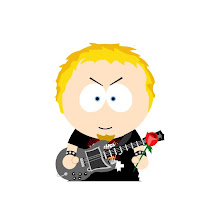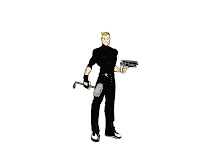The firm is best known for its new headquarters for Lufthansa in Frankfurt and the new European Investment Bank headquarters which is currently under construction in Luxemburg.
“We are delighted with the outcome of the competition,” said UCD President, Dr Hugh Brady. “The creativity of the design from Christoph Ingenhoven’s team meets the vision we set out to create a precinct of modern beauty which blends with the natural landscape of the campus and surpasses environmental standards for energy usage.
The winning design has proposed a new building edge on to the N11 frontage of UCD, which in turn will enclose a revitalised green oasis at the heart of the university. These circular green spaces will be bounded by a tree-lined belt walk. The newly laid out open space will be traversed by pathways creating stronger linkages between the various campus buildings. To help form the centre circles, the architects propose reducing the size of the existing lake and softening its edges.

(Pictured viewing winning Gateway architectural model: Architect, Christoph Ingenhoven and UCD President, Dr Hugh Brady)
Access to the green space and the wider campus will be through a dramatic new Gateway building. The new building forms are softened by echoing the curved theme of the landscape design. The buildings in the Gateway are linked at the centre by a 6 storey open air glass-covered roof over a new pedestrian plaza around which many new amenities will be clustered. The design takes Belfield’s geographical position into account with the mountains and prevailing winds to the south west and the elevation over the sea to the east.
Within the Gateway will be a mix of uses including: a culture and exhibition centre, cinema, hotel, student residences, office and retail facilities, crèche and medical centre. “The campus environment will be greatly enhanced by providing a cultural/entertainment centre for students which will also attract the local community and visitors from further afield,” said Dr Brady. “The new facilities will enable the university to expand its academic and non-academic conference provision and increase the out-of-term usage of the campus.” The central plaza will offer a dynamic and vibrant space for students, staff and visitors to the campus. The plan is to include 1,000 residences in the Gateway to augment the current student on-campus accommodation.
The extent of the Gateway will cover 13 hectares of the 132 hectare Belfield campus. Fronting onto the N11 it reaches south as far as Merville House, the UCD Innovation Park and incorporates the current location of the running track – which is being relocated to the sports section of the campus and the recently restored Belfield House. To the west, it allows for existing buildings including the engineering centre and those along the pedestrian spine stretching from the Quinn Business School to the science centre. To the north it includes O’Reilly Hall and links the veterinary hospital.

Ingenhoven architects are known for their innovative high-tech approach to sustainable building design and the proposal includes many innovative ideas in this regard.
The design – which is subject to planning permission – includes a proposed light weight arch extension to the N11 flyover. The new bridge design will provide a safer pedestrian environment at the entrance to the campus where people will be given priority over vehicles. The current surface carparks beside O’Reilly Hall and the engineering complex will be replaced with multi-storey and underground parking. This reclaimed land will become part of Gateway as green space in the beltwalk parks.
Green building design is central to the work of Ingenhoven Architects. The new Gateway complex integrates low energy and building control systems to reduce total energy consumption. Intelligent facades provide for insulation, natural ventilation and maximum daylight. Efficient lighting systems, solar and geothermal-backed conditioning systems and “non stand-by” technologies will also reduce energy demand.
The design is due to go on display in the university. The project will be self-funding and the university is currently in the process of inviting expressions of interest from developers with a view to forming a partnership. Until such time as this process is completed the university is not in a position to put a value on the cost of the project. The design allows for phased development and after planning approval, is expected to take several years to complete.
-Courtesy of UCD.ie
~The Damo




















